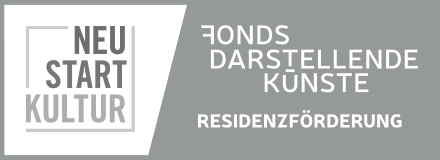
A central motif that overdetermines the history of post-structuralist psychoanalysis, as well as the history of theater in the long twentieth century, is the “stade du mirroir” (mirror phase). With the definition of this concept, Jacques Lacan (1901-1981) initiates his discourse. Within the context of his therapeutic practice at the experimental psychiatric private clinic La Borde, Lacan’s student and media activist, Félix Guattari (1930-1992), determines the concept of an acoustic mirror phase, so to speak. The inherently visual concept shifts here to an acoustic level. The mirror phase defines a crucial developmental stage in the subject’s genesis as a child. What mirror phase do people who cannot see or do not see go through? The relevance of this concept for reflecting on the radio is evident.
The mirror phase marks the stage in psychosocial development where the imaginary is formed. Lacan places the subject in a triad of the Real, the Symbolic, and the Imaginary. The child, whose body is fundamentally fragmented into a multitude of partial objects, experiences a coherent visual impression of its own body in the mirror, more coherent than it actually is. It produces an imaginary representation of itself that goes beyond its actual condition. The fragmented being undergoes an imaginary unification. This conceptual framework can easily be applied to theater and also to radio. It concerns not only the issues of a coherent narrative, consistent characters, a clear dramatic structure, and coherent sequences of actions. It is also a conceptual framework that can be applied to the question of political subjectivation. Regarding the nation-state, Benedict Anderson (1936-2015) spoke of imagined communities. Accordingly, one could argue, drawing on the ideas of Edmund Husserl (1959-1938) in a somewhat abbreviated manner, that politically motivated actors within the nation-state project imagine themselves into closed temporal horizons of transcendental subjectivity, and their ideological narrative becomes imaginarily closed.

During the second week of our “flausen+ stipendium” we dedicated our time to initial stage experiments. Additionally, we watched several films. One of these films was “Hypernormalisation” (2016) by Adam Curtis (*1955). Curtis’s film is not without controversy, but particularly intriguing is his narrative of the Middle East in the twentieth century. Curtis takes an interest in figures such as Saddam Hussein (1937-2006), Muammar Gaddafi (1942-2011), and Hafiz al-Assad (1930-2000). In his argument, Curtis suggests that after al-Assad’s grand pan-Arab project fails, he becomes the political actor in the Arab world who implements the concept of suicide bombing as a method of political intervention with far-reaching, strategic anti-American intentions. It represents a different form of bodily fragmentation that, according to the readings by Jörn Etzold (*1975) regarding Friedrich Hölderlin (1770-1843) and Oedipus, can be described as hybris, which may be inevitably associated with the imaginary closure. This marks the fundamental motif that characterizes our artistic research process.
During the course of the week, we tested the majority of the scenes that we had conceived in the previous week. Furthermore, we made some fundamental artistic decisions.
We rehearsed the following scenes:
1. We rehearsed an initial scene that is associated with a theatrically naturalistic depiction of a Syrian radio studio. We defined roles and composed a text based on the typical Syrian state radio program on Radio Damascus. Additionally, we created a soundscape that moves in alignment with this radio program. Furthermore, the scene serves the purpose of placing historical narratives in the form of radio contributions that appear relevant for understanding the subsequent scenes. Based on this foundation, one can anticipate an approximately twenty-minute scene that also plays with the objectification associated with totalitarian state structures in its linguistic form.
2. We rehearsed a second scene that is related to everyday life in a state-owned Syrian radio station. In our directorial approach, we applied methods from the theoretical apparatus inspired by the discussions of Walter Benjamin (1892-1940) and Bertolt Brecht (1898-1956) conducted in exile, which draw from Franz Kafka (1883-1924) and deal with the question of interruption and gesture. Our interest lay in the exposure of gestures such as cleaning and reading newspapers, as well as the ringing of a telephone. In this scene, we began the process of altering everyday gestures, leading to a sense of dismay and serving as the basis for a gestural disruption of the naturalism in the first scene. Anticipated can be a scene of 15 minutes.

3. We rehearsed a sixth scene, situated after the mass-media announcement of the death of Hafiz al-Assad. In this scene, we introduced a structural opening towards the audience, which is not the first structural opening in the sequence of the play, as prior structural openings towards the audience have already occurred. Here, the aim is to perform the customary Quranic chant over the radio, which was also broadcast on Syrian state radio for a period of 40 days upon the death of Hafiz al-Assad. This coincides with the performance of the customary funeral rites (العزاء), which involve sitting and commemorating the deceased for at least 2 minutes, but possibly for the entire day, before leaving the space. The space is exited by addressing the family (in this case, the performers) with the formulaic phrase ” عظم الله أجركم,” shaking hands with the bereaved, and exiting the room. It will be a task for the audience Anticipated can be a scene of ten to sixty minutes.

4. Additionally, we worked on a central sequence of scenes three to six, which specifically concerns the announcement of Hafiz al-Assad’s death.
We made the following fundamental artistic decisions:
1. We decided to create all central props for the project using a 3D printer. These props include a telephone, microphone, guns, sunglasses, a hand broom and dustpan, and a box shaped like a Quran. This approach allows us to use a distinctive color and also allows us to slightly alter the scale of the objects, making minor alterations to these readymades.
2. We decided to install an additional microphone with a speaking position at the edge of the stage. This decision was made because we quickly realized that our requirements for the project go beyond the infrastructure provided by the residency. From this speaker’s position, all team members can verbalize any directorial ideas during a run-through that cannot be practically realized on stage. This provides the opportunity to permanently incorporate the ideas into the concept or, alternatively, to later replace certain ideas with their actual implementation.

3. We also decided to add an audio track to the project that can be accessed, if necessary, with headphones during a performance. This audio track will offer an alternative to the normal course of the play and provide a montage of memory narratives from the project team. These memories concern experiences and recollections related to events in Syria, memories of the GDR (German Democratic Republic), intersections of memories of the GDR and memories of Syria, and memories related to the operation of the Rousl Studios in Syria.
Regarding the sound concept, we are working with archival material from Syrian state media to analyze the sound structure of Romeo Castellucci’s “Tragedia Endogenidia” and some influences from Tetsuo Kogawa’s recent performance “Airwaves Art.” Kogawa composes sound sculptures from SDR (Software Defined Radio) radio waves. This stems from FK’s exchange with Kogawa in the context of academic lectures that have emerged during our work over the past two years.

flausen+headquarters
Alexanderstraße 124
26121 Oldenburg
flausen+gGmbH
Klävemannstraße 16
26122 Oldenburg
Das überregionale Netzwerk flausen+ wird gefördert von dem Beauftragten der Bundesregierung für Kultur und Medien über das Programm “Verbindungen fördern” des Bundesverbands Freie Darstellende Künste e.V.
Gefördert vom Fonds Darstellende Künste aus Mitteln des Beauftragten der Bundesregierung für Kultur und Medien im Rahmen von NEUSTART KULTUR.
Gefördert vom Fonds Darstellende Künste aus Mitteln des Beauftragten der Bundesregierung für Kultur und Medien.



